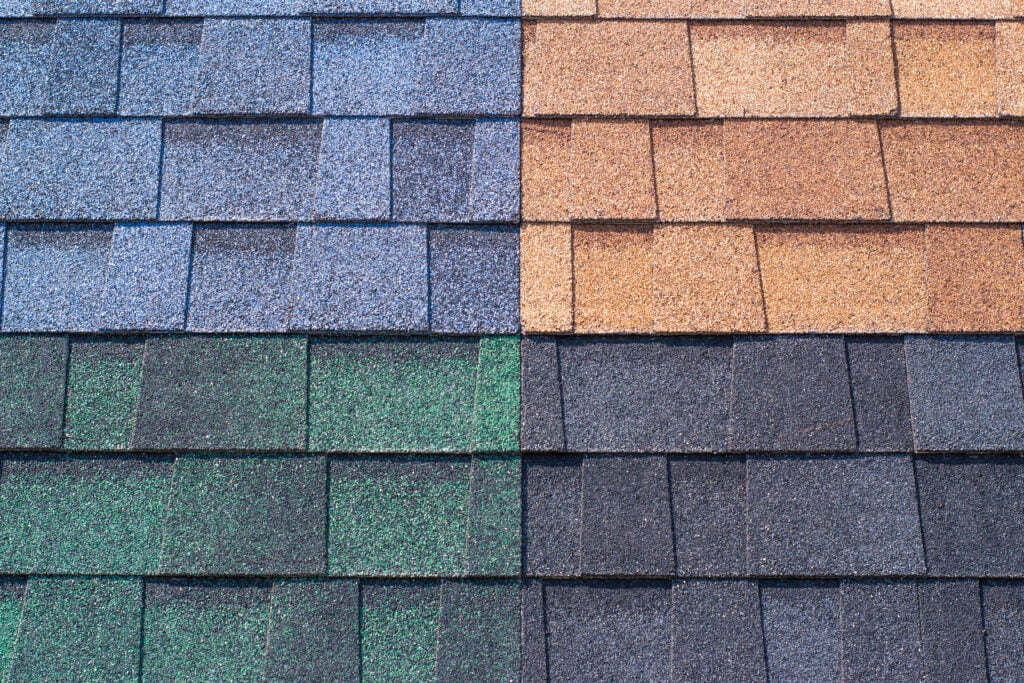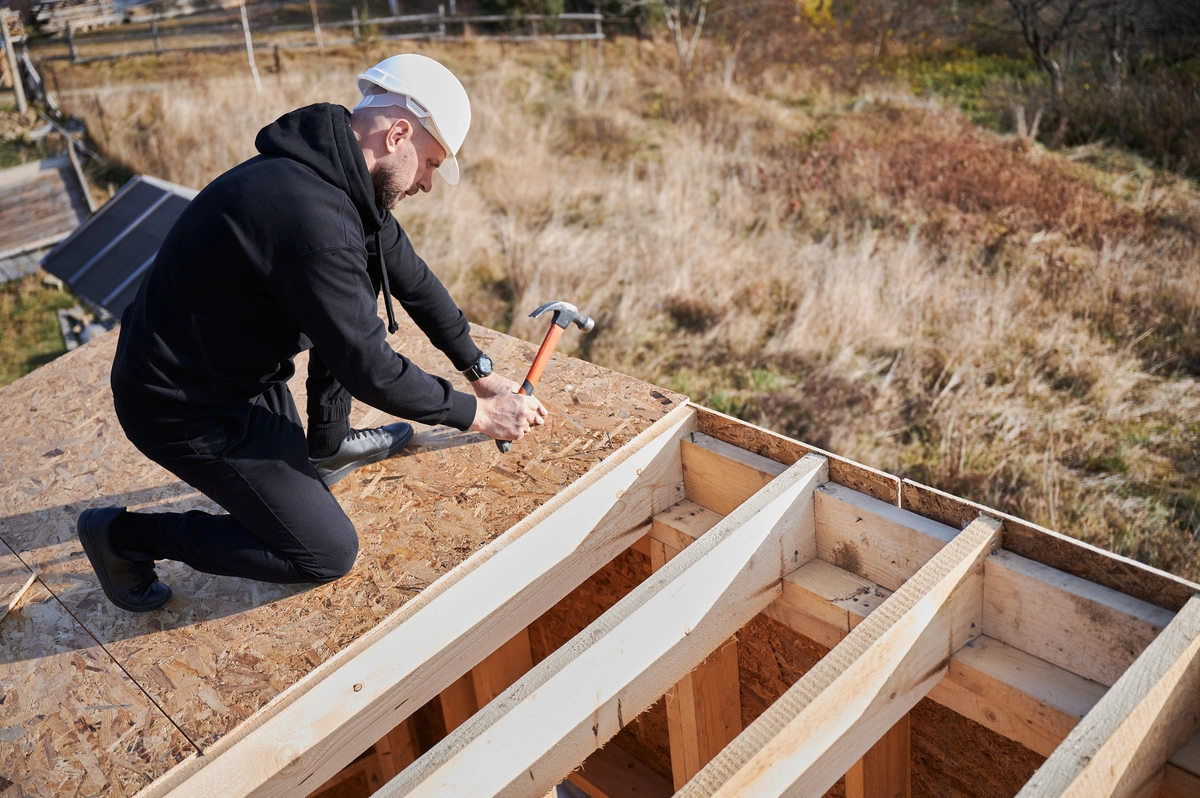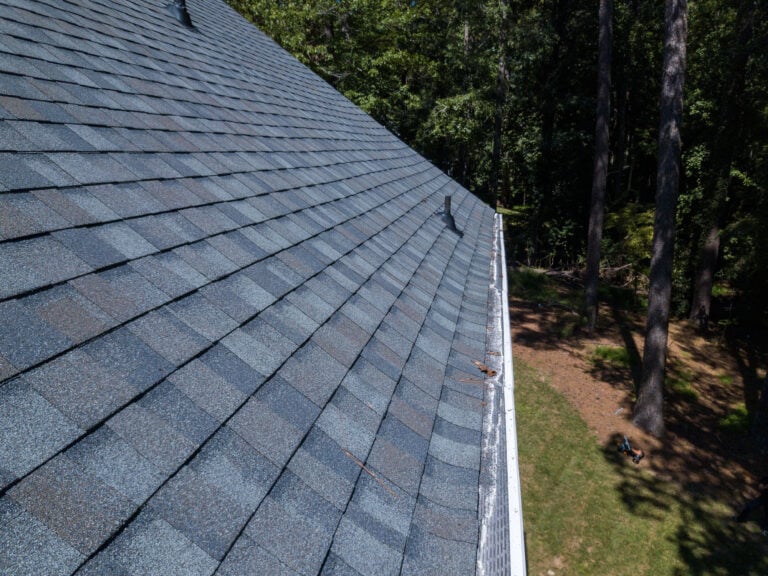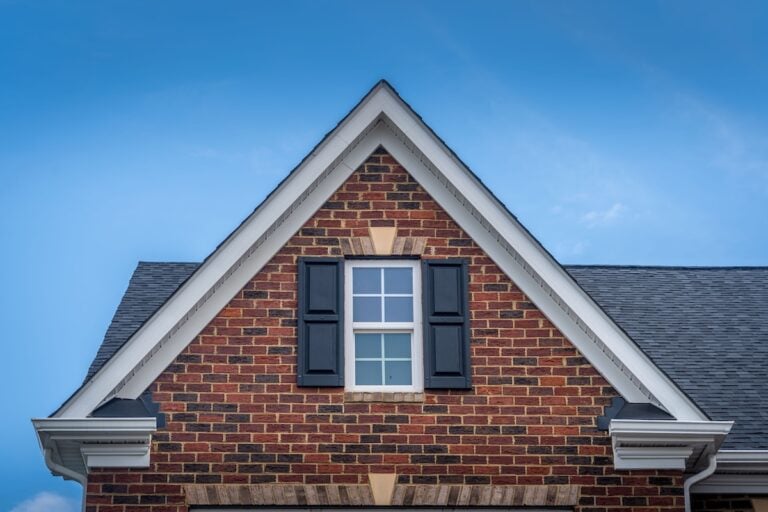Roof sheathing is a crucial component of your home’s roofing system, providing structural support and a base for roofing materials. Choosing the right thickness for your roof sheathing is essential for ensuring the stability, durability, and longevity of your roof. Let’s dive into how you can determine the best roof sheathing thickness for your home!
Inside this blog:
- 5 factors to consider when choosing roof sheathing thickness
- How to determine the right thickness for your roof sheathing in 4 easy steps
- Common roof sheathing thickness options
Keep reading to learn more about roof sheathing thickness and what your new roof will require.
📏 5 Factors to Consider When Choosing Roof Sheathing Thickness
When deciding on the appropriate thickness for your roof sheathing (aka ‘roof decking’), several factors come into play.
Here are some key considerations:
1. Climate
When considering the climate in your region, it’s not just about the average temperatures or precipitation levels; it’s about understanding the full spectrum of weather patterns and extremes that your roof will face throughout the year. Areas prone to high winds from hurricanes or tornadoes, heavy snow loads from frequent blizzards, or extreme heat from scorching summers may require thicker roof sheathing to withstand these conditions effectively.
2. Roofing Material

The type of roofing material you choose for your roof replacement has a significant impact on the thickness of the sheathing needed to support it adequately.
While lightweight asphalt shingles may only require minimal support, heavier materials like slate, clay tiles, or concrete tiles place greater demands on the underlying structure. Thicker sheathing provides the necessary strength and stability to support these heavier materials, preventing sagging, cracking, or other forms of damage over time.
3. Roof Pitch
The pitch or slope of your roof not only affects its aesthetic appearance but also its structural requirements. Steeper roofs exert more force on the sheathing due to the gravitational pull of the roofing materials and the increased surface area exposed to wind uplift.
As a result, roofs with steeper pitches typically require thicker sheathing during a roof installation to prevent sagging, buckling, or other forms of structural failure.
4. Building Codes
Local building codes and regulations are in place to ensure the safety and structural integrity of buildings, including their roofing systems. These codes may specify minimum requirements for roof sheathing thickness based on factors like climate, building height, and structural design.
By consulting these codes and adhering to their requirements, you can ensure that your roof sheathing is made from durable materials and meets the necessary standards for safety and compliance.
5. Budget
While thicker roof sheathing may offer added strength and durability, it’s essential to consider your budget constraints when making decisions about your roofing system. Thicker sheathing typically comes at a higher cost due to the additional materials and labor required for installation.
However, investing in thicker sheathing can pay off in the long run by providing added protection and longevity for your roof, potentially reducing the need for costly repairs or replacements in the future. It’s essential to weigh the benefits of thicker sheathing against the additional expense and consider the long-term implications for your budget and the overall value of your home.
How to Determine the Right Thickness for Your Roof Sheathing

To determine the best thickness for your roof sheathing, consider the 4 following steps:
1. Assess Local Building Codes
Start by researching the building codes and regulations in your area. These codes often provide guidance on minimum requirements for roof sheathing thickness based on factors like climate and roofing material.
2. Consult a Professional Roofing Contractor
If you’re unsure about the appropriate thickness for your roof sheathing, consider consulting a contractor from a roofing company. They can assess your specific needs, taking into account factors like climate, roof pitch, and building design, to recommend the best thickness for your project.
3. Calculate Load Requirements
Determine the anticipated load that your roof sheathing will need to support. This includes the weight of the roofing materials, as well as factors like snow loads, wind uplift, and any additional loads such as rooftop equipment or solar panels. Use this information to calculate the required thickness to meet structural requirements for your new roof.
4. Consider Material Compatibility
Different roofing materials have specific requirements for sheathing thickness to ensure proper support and installation. Consult the manufacturer’s recommendations for your chosen roofing material and select sheathing thickness accordingly. The sheathing thickness that was used for your old roof may not necessarily be sufficient for a new, whole roof replacement.
Common Roof Sheathing Thickness Options
Roof sheathing is available in various thicknesses, typically ranging from 3/8 inch to 3/4 inch or more. Here are some common thickness options and their applications:
- 3/8 Inch: Suitable for low-slope roofs or applications where weight is a concern. However, it may not provide sufficient strength for heavy roofing materials or high wind areas.
- 1/2 Inch: A versatile option suitable for most residential roofing projects. Provides adequate strength and support for lightweight to moderate roofing materials.
- 5/8 Inch: Offers enhanced strength and durability, making it ideal for areas prone to high winds or heavy snow loads. Suitable for most roofing materials and provides added structural integrity.
- 3/4 Inch or Greater: Recommended for areas with extreme weather conditions or heavy roofing materials like slate or clay tiles. Provides maximum strength and support for demanding applications.
A Strong Roof Starts With The Right Roof Sheathing Thickness
Choosing the right thickness for your roof sheathing is essential for ensuring the stability, durability, and safety of your home’s roofing system. Consider factors like climate, roofing material, roof pitch, and local building codes when determining the best thickness for your project. Consult with professionals if needed to ensure that your roof sheathing meets structural requirements and provides long-lasting protection for your home.
By following these guidelines and considering the specific requirements of your project, you can confidently select the best roof sheathing thickness for your home, ensuring a strong and durable roofing system that provides lasting protection and peace of mind.
Contact our expert team of roofers at Palladium Roofing today and experience reliable communication and industry-competitive warranties. We’ll make sure your property stands strong with a resilient and attractive roof.





